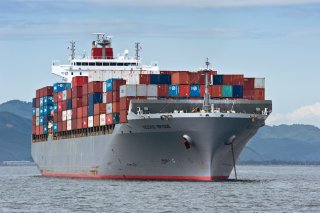Jerry Haar Ricardo Ernst
 “Globalization,” the bête noir of isolationists, protectionists, and labor and environmental activists for nearly a decade, is now considered by many reasonable, centrist individuals to be dying, if not dead already.
“Globalization,” the bête noir of isolationists, protectionists, and labor and environmental activists for nearly a decade, is now considered by many reasonable, centrist individuals to be dying, if not dead already.However, there is compelling empirical evidence to the contrary. Just recently, Apple announced it would manufacture 25 percent of its products in India due to disruptions in China. TSMC, the world’s biggest maker of advanced computer chips, committed $12 billion to build an Arizona-based semiconductor plant in 2020, and has since announced the opening of the company’s second chip plant there, raising its investment in the state to $40 billion. Meanwhile, Noah Itech, a Chinese supplier for Tesla, has invested $100 million in a new factory in Monterrey, Mexico, and the Brazilian multinational personal care cosmetics group Natura has expanded its presence to seventy-three countries across all continents except Antarctica.
In reality, a major source of pessimism and attacks on globalization is the widespread confusion between “globalization” and “globalism,” with the latter undermining the former.
Globalism is an ideology, a firm set of beliefs that goods, services, capital, and people should be able to move unfettered across borders and that trade agreements should be set in place to foster interconnectedness and interdependence. Globalization, on the other hand, is the dynamo, the actual process of cross-border exchanges of products, services, people, information, and finance. It is a process that is agile and resilient, though often impacted by external factors such as a pandemic, natural disaster, climate change, civil unrest, and public safety.
In response to those who claim we have entered an era of deglobalization, one could point out that world trade volume and value have expanded by 4 percent and 6 percent, respectively, since the World Trade Organization (WTO) was established in 1995. Moreover, services trade, excluded in global trade reporting, is ever-increasing, now exceeding $6.1 trillion, over one-fifth of total world trade in goods and services. Notable also is that services trade, in contrast with merchandise trade, produces a yearly surplus for the United States.
Whereas globalism is static—after all, it is a credo—globalization is evolving. Recognizably, trade among nations ebbs and flows. To illustrate, U.S. imports of goods from China dropped to less than 17 percent last year from a high of 22 percent in 2017. Countries such as Mexico, Vietnam, and South Korea have gained a share over China, with Vietnam boosting its exports to the U.S. to $120 billion, a more than tenfold increase since 2007. At the same time, China’s footprint in the Americas is increasing dramatically, and Beijing is now the second-largest trade partner in the region after the United States.
Another feature of globalization today is concentration. No region is close to being self-sufficient. Every region relies on trade with others for more than 25 percent of at least one important type of good. According to the McKinsey Global Institute, 40 percent of global trade is “concentrated.” To illustrate, the United States imports nearly all of its semitrailer trucks and light goods vehicles from Mexico, while Mexico imports nearly all of its maize, propane, and refined petroleum products from the United States. This concentration improves efficiency and product availability, but complications can ensue, especially when products are harder to replace on short notice. Pandemic lockdowns in China and the Russian invasion of Ukraine are two examples.
As a result of the COVID-19 pandemic, the topic of supply chains has moved from the back burner to the front burner. Shortages of personal protection equipment, congested ports, and the limited number of supply sources for certain inputs, such as semiconductors, served as a wake-up call for companies to diversify and build redundancies into their supply chains and, where feasible, onshore or at least nearshore production.
Finally, neglected in discussions of trade and globalization is “domestic capability and domestic demand”—locally produced goods for both foreign and domestic markets. Firms like the Mexican auto parts producer Delphi supply both internal and external markets. As technical capabilities increase among suppliers and local consumer demand grows, producers with large domestic markets, such as China, Brazil, and India, can direct more of their production internally, reducing their dependency on exports. This creates the illusion of decreased globalization.
Global trade hit a record $32 trillion in 2022, according to the United Nations. And despite the lingering impact of the pandemic, high energy prices and interest rates, sustained inflation, and negative spillovers from the war in Ukraine, world trade in goods and services and commercial interconnectedness will continue unabated.
In his 1997 volume Has Globalization Gone Too Far?, Harvard professor Dani Rodrik highlights the severe tension between the market and broad sectors of society. His assessment of globalization today is that it is not collapsing but being reshaped. Whatever the case may be and regardless of one’s position on globalization, one thing should be perfectly clear: while globalism may be debatable, globalization has evolved to a point where it is not reversible.
Jerry Haar is a professor of international business at Florida International University and a global fellow of the Woodrow Wilson Center in Washington, D.C.
Ricardo Ernst is a professor of operations and global supply chains and the Baratta Chair in Global Business at Georgetown University.
No comments:
Post a Comment